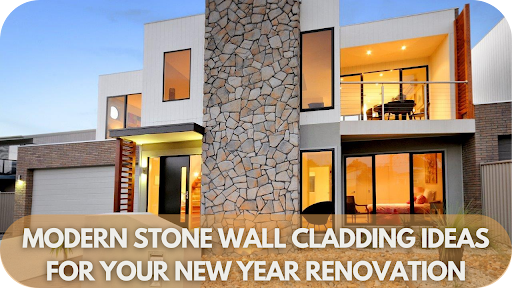
Tired of dealing with unsightly pool coping that cracks, stains, or becomes slippery over time?
Traditional concrete or brick coping can be a constant maintenance headache, detracting from the beauty and safety of your pool area.
Limestone pool coping offers a durable, low-maintenance, and elegant solution that enhances the overall aesthetic of your backyard oasis. This comprehensive guide will explore everything you need about limestone pool coping, from installation to care.
What is Limestone?
Limestone is a sedimentary rock primarily composed of calcium carbonate (CaCO3), usually in the form of the mineral calcite. It often contains clay, silt, and other minerals such as quartz and aragonite.
These impurities and organic matter can impart various colours and textures to the stone, making each limestone piece unique.
Due to its aesthetic appeal and versatility, limestone is quarried for use in construction and landscaping, including applications like pool coping. It is formed from the skeletal fragments of marine organisms such as coral or foraminifera.
Critical Properties for Pool Environments
Limestone’s suitability for pool environments stems from several inherent properties:
- Durability: While softer than granite and some other natural stones, limestone is sufficiently durable to withstand the physical demands of poolside installations, including frequent foot traffic and direct contact with pool chemicals and water.
- Heat Resistance: Limestone does not absorb heat excessively, making it comfortable to walk on even under strong sunlight, an essential feature for pool coping.
- Non-slip Surface: Naturally textured limestone offers a non-slip surface that enhances safety around wet pool areas, which is crucial for preventing slips and falls.
- Aesthetic Quality: Limestone’s warm, natural tones and varied textures integrate seamlessly into outdoor environments, complementing modern and traditional pool designs.
Benefits of Limestone for Pool Coping
Limestone pool coping offers numerous benefits that make it a popular choice for both residential and commercial pools:
- Aesthetic Appeal: Limestone’s natural appearance adds an elegant and sophisticated touch to pool designs. Its range of colours—from creams to light greys and rich golds—complements various landscaping styles, enhancing the overall beauty of the pool area.
- Consistency in Texture and Color: Unlike some other natural stones, limestone tends to have a more uniform texture and colour consistency, which allows for a cohesive look around the pool. This uniformity is particularly valuable in projects where a clean, streamlined appearance is desired.
- Thermal Comfort: Limestone remains relatively calm even in hot weather, making it a comfortable choice for barefoot areas around the pool. This natural property ensures that the stone surface is pleasant for swimmers moving between the water and the poolside.
- Durability and Longevity: When properly sealed and maintained, limestone can withstand the harsh pool environment, including exposure to chlorinated water and sun. Its durability ensures it remains functional and attractive for years, despite the wear and tear typical of poolside settings.
- Safety: The natural texture of limestone provides a non-slip surface, which is crucial for wet areas around the pool. This feature helps reduce the risk of slips and accidents, making it a safer choice for areas with high foot traffic.
Types of Limestone Finishes for Pool Coping
Limestone pool coping can be finished in various ways to enhance its aesthetic appeal and functional performance.
The choice between textured and smooth finishes depends on the pool area’s specific requirements and style preferences. Here’s a breakdown of these finishes, along with their advantages and disadvantages:
Textured Finishes:
- Tumbled: This finish provides a weathered, aged look with rounded edges and a porous surface. It is highly slip-resistant, making it ideal for pool environments where safety is a priority.
- Bush Hammered: This finish is achieved by pounding the stone surface with a hammer to create a coarsely textured surface. It offers excellent slip resistance and a rustic appearance.
| Pros | Cons |
| Textured finishes enhance slip resistance, which is crucial for wet areas. They also conceal marks and wear, making them practical for high-traffic areas. | The rougher surface can be harder to clean and may require more maintenance to prevent mould and mildew in the pits and crevices. |
Smooth Finishes:
- Honed: This type of limestone provides a smooth, matte surface without gloss, achieved by grinding and sanding the stone. Honed limestone is less slippery than polished stone but smoother than textured options.
- Polished: A high-gloss finish enhances the stone’s natural colours and patterns. However, it’s less common for pool coping due to its slipperiness when wet.
| Pros | Cons |
| Smooth finishes are easier to clean and maintain. They offer a more refined and elegant appearance for modern pool designs. | They can be slippery when wet, posing a hazard in pool areas. Additionally, smooth surfaces may show wear, scratches, and watermarks more readily than textured surfaces. |
Installation Process
Step-by-Step Guide on How Limestone Pool Coping is Installed:
- Preparation: Ensure the pool deck surface is clean, level, and stable. Remove debris or old coping to prepare a solid foundation for the new limestone coping.
- Measurement and Cutting: Measure the pool’s perimeter to determine the amount of limestone needed. Using a wet saw, cut the limestone to fit the specific dimensions of the pool edge for precision.
- Setting Mortar: Apply a layer of mortar directly on the pool’s edge where the coping will be installed. Use a notched trowel to spread the mortar evenly.
- Placing Limestone Coping: Carefully place each piece of limestone into the mortar. Ensure each piece is level and straight. Use a rubber mallet to gently tap the limestone into place, ensuring a secure and even fit.
- Grouting: Once all the coping is placed and the mortar has been set, fill the joints between the limestone pieces with grout. Wipe any excess grout with a damp sponge to clean the limestone’s surface.
- Sealing: After the grout has cured, apply a sealant to the limestone to protect it from weather elements and pool chemicals. This step is crucial for maintaining the longevity and appearance of the limestone coping.
Important Considerations During Installation:
- Weather Conditions: Avoid installing limestone coping in extreme weather conditions, as this can affect the setting time of mortar and grout.
- Proper Drainage: Ensure that the installation allows for adequate water drainage away from the pool and coping to prevent water pooling and potential damage to the structure.
- Alignment and Levelling: Pay close attention to the alignment and levelling of the limestone during installation. Misalignment can lead to uneven wear and potential hazards.
- Choice of Adhesives and Sealants: To ensure the best results and durability, use high-quality, waterproof adhesives and sealants suitable for limestone and outdoor conditions.
Maintenance and Care
- Regular Cleaning: Clean limestone coping regularly using a soft brush and a mild detergent. Avoid acidic cleaners, which can etch the stone. Rinse thoroughly with clean water to remove any soap residue.
- Sealing: Depending on pool chemicals and weather exposure, apply a high-quality sealant to limestone coping annually or biennially. Sealing helps protect the stone from stains and water damage.
- Prompt Stain Management: Address spills and stains immediately to prevent them from setting in. Blot (don’t rub) spills with a clean cloth, and use a stone-specific cleaner for stubborn stains.
- Winter Care: If the stone is in a freeze-thaw area, ensure it is properly sealed before winter. This prevents water from seeping into the stone and freezing, which can cause cracking and spalling.
Common Issues and How to Address Them:
- Efflorescence: This white powdery residue can appear on limestone due to water evaporating the stone’s surface. Remove efflorescence by gently brushing it off and ensuring proper water drainage to minimise recurrence.
- Cracking and Chipping: Regularly inspect coping for signs of damage. Small cracks and chips can be filled with a stone repair compound that matches the limestone. For more significant damage, consider replacing the affected section.
- Discolouration: Fading or darkening can occur due to sun exposure or water damage. Regular sealing and prompt stain removal help maintain the limestone’s original colour. A professional stone refinisher can sometimes restore the stone’s natural colour if discolouration occurs.
Design Ideas
Examples of Pool Designs Using Limestone Coping:
- Infinity Edge Pools: Limestone coping can beautifully complement the sleek, modern look of infinity edge pools. The natural tones of limestone provide a subtle contrast to the reflective water, enhancing the visual continuity between the pool and the surrounding landscape.
- Classic Roman Pools: For pools with Roman or Grecian designs featuring symmetrical shapes and formal lines, limestone coping adds an element of timelessness and luxury, perfectly matching the classical aesthetic.
- Freeform Pools: Limestone coping can be used in pools with irregular, natural shapes to maintain a rustic and organic feel. It seamlessly blends with natural water features like waterfalls or rock formations.
Tips for Matching Limestone with Other Pool and Patio Materials:
- Colour Coordination: Choose limestone shades that complement or contrast with the surrounding deck materials. For instance, lighter-coloured limestone pairs well with darker decking materials, creating a balanced look.
- Texture Harmony: When combining materials, mix textures carefully. Smooth limestone coping works well with textured and smooth patio materials, providing a subtle transition that ties the space together.
- Consistent Style: Ensure all materials reflect the home’s overall style and landscape. For a modern look, opt for cleanly cut limestone with minimal texturing. Consider rougher, more naturally shaped limestone for a more traditional or rustic style.
Conclusion
Limestone pool coping offers durability and safety with its non-slip surface and a timeless aesthetic appeal. As you plan your next pool project, consider limestone’s natural beauty and long-lasting quality to elevate your outdoor space.
Explore the possibilities with limestone and invest in your property’s luxury and functionality.
More To Explore

2025 New Years Renovation Resolutions: Why Stone is the Best Choice for Your Home
Homeowners often face the challenge of selecting durable, sustainable, and aesthetically pleasing materials for renovations. Traditional options like wood and concrete can fall short, leading

Modern Stone Wall Cladding Ideas for Your New Year Renovation
Are you thinking of giving your home a fresh look for the New Year? Imagine stepping into a space where every wall becomes a statement,


